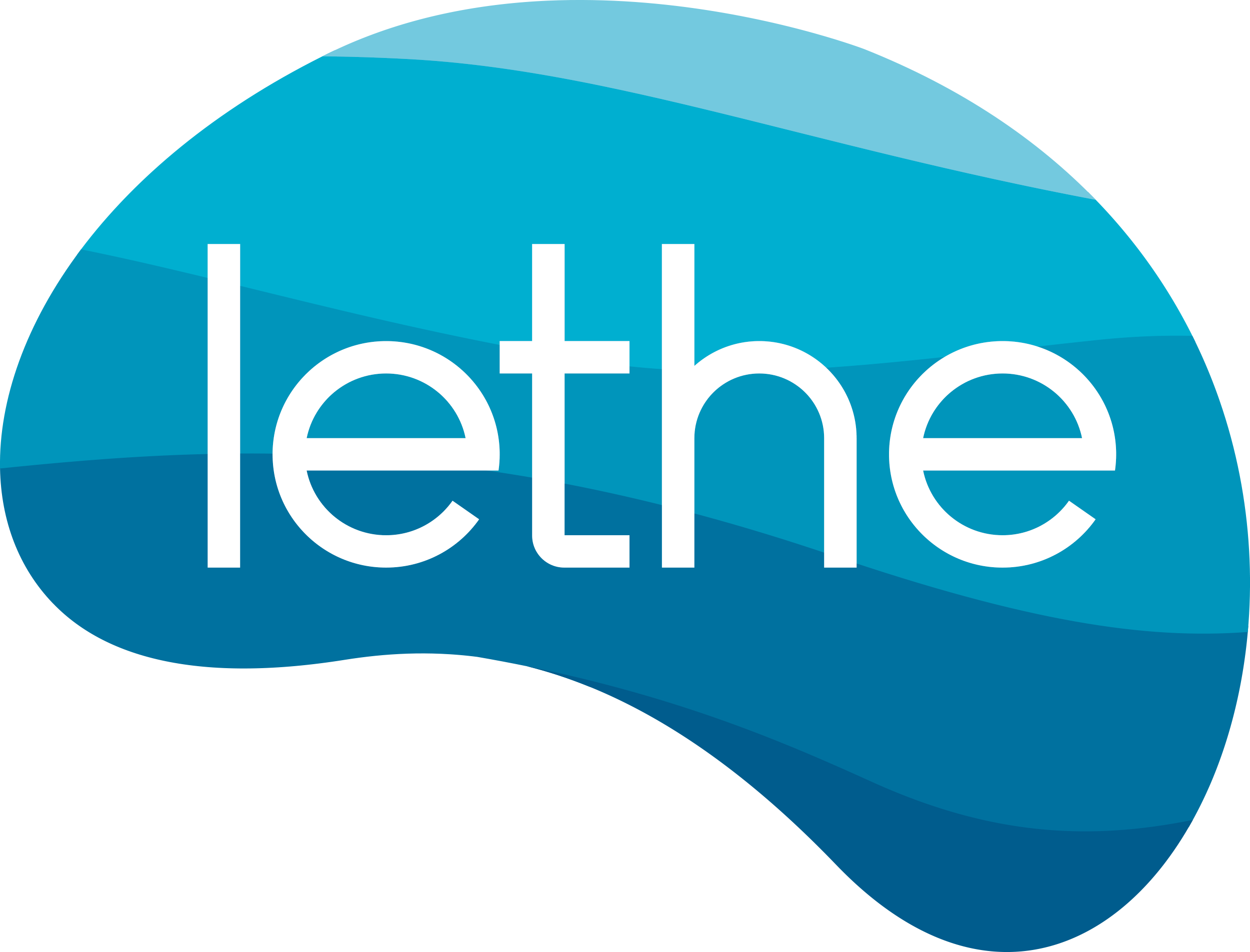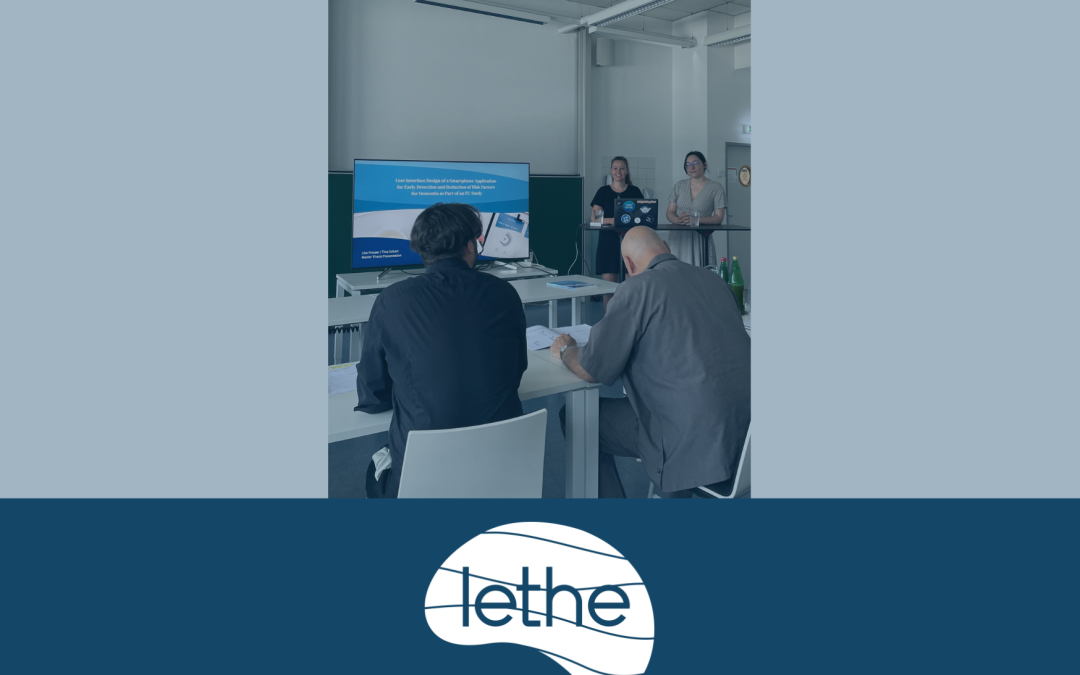Could you tell us a bit about yourself?
Lisa: Hi, I am Lisa. Until June 2022, I studied Interaction Design at the FH Joanneum in Graz. At the same time, I have been self-employed in web design and development and in social media marketing since the beginning of 2020. After I finished my master’s degree in Graz, I turned the self-employment into a full-time job and am also lecturing web development at my bachelor university – the University of Applied Sciences Ravensburg-Weingarten.
Tina: My name is Tina. I studied Interaction Design together with Lisa and also graduated in June. After my master’s degree I moved to Switzerland and I work now as a UX Designer and Human Factor Engineer at Zühlke.
What motivated you to study Interaction Design?
Lisa: It was clear very early on that I wanted to do something with digital media. My bachelor program was very diverse and I dealt with different areas of the digital media world. From game development to animation and photography to interface design and app development, everything was there. After my six-month mandatory internship at Bosch in the UX department, it was clear to me that I would like to focus more on the direction of UX design / Interaction Design. Since this area is unfortunately still rarely offered as a master’s program, I ended up in Graz.
Lisa: My favorite thing about Interaction Design is that it’s a very meaningful yet diverse job. In this age, we are surrounded by digital interfaces everywhere and it is frustrating when we don’t understand them. It’s a mix of psychology, experience and good design that makes for a simple, understandable interface. You have to be able to put yourself in the shoes of your target audience no matter what their cultural background, age or origin is. Even if the importance of this job is not yet widespread, the success of a digital application is in many cases in the hands of us designers. Because it’s no use if an application is created on a high technical level and works flawlessly, but the interface is so bad and complicated that nobody wants to use it.
Tina: I started in the design world with industrial design. The bachelor gave me the freedom to try things out and I had a good mix between analog and digital projects. After the bachelor, I had the urge to try another design direction and dive even more into the digital world. User experience is everywhere and it influences more than I thought before I started studying Interaction Design, which is exactly why it fascinated me so much. Lisa has already explained why we both ended up in Graz – it was the same for me.
You were recently awarded the Master of Arts for your and the thesis entitled “User Interface Design of a Smartphone Application for Early Detection and Reduction of Risk Factors for Dementia as Part of an EU Study” by you.
What do you think was most crucial in developing the concept as well as a design for the application?
The most important aspect of the project, and at the same time the one most challenging, was communication. Having the same goal and the same common ground is very important. Designers have a leading role and not only change the color of a button from blue to green but also design processes. Unfortunately, it was not possible to involve us earlier and more extensively in the project, and we therefore had very limited time due to our master thesis and the lack of budget for the designers. Ideally, we would have been involved in the project a bit earlier and would have supported it until the release.
It is also very important to involve the target group in the project. The user test in the University Hospital Vienna showed us again that a touch point with the potential future users brings many ambiguities to light and helps to understand the user. This is very important because we work in a user-centric way.
How did you approach the development?
We went through the design thinking process in a modified form. As we joined the project very late, the empathy phase, in which you empathise with the user, took place only very sporadically. So, we quickly jumped into the define phase and used various creative methods to define our target group and their needs more precisely.
Then we jumped into a creative ideate phase and generated as many free ideas as possible. These were then put on paper in the prototype phase, then digitised and later turned into the digital high-fidelity prototype. Lastly, we went into the testing phase, where we conducted user tests at University Hospital Vienna in Vienna and modified the prototype after the test. So, we jumped back and forth between the phases several times.
What value did the user testing add to the development?
First and most importantly, the testing showed us that our target group is significantly older than previously planned. Of course, this has changed a lot and also raised several issues. In general, it turned out that some features that were considered very important by the team were not important to the users. At the same time, they wanted new features that hadn’t been thought of yet. In summary, the testing was very important and showed the whole team where the problems were. We wished there would have been opportunities for more testings in previous stages already.
What are your three take-home learnings from working on this project?
As already mentioned, the importance of user testing has been made clear to us again. We have learned that it is better to do more user testing than less. It is also very beneficial to work in interdisciplinary teams, but more focus should be put on communication. As a final point, it showed that we designers do a great and important job, even if we are sometimes underestimated. This is shown by satisfied users and positive feedback.
Is there anything you’d like to add?
We are both very happy that we were able to join the project and experience being part of an EU study with such an interesting topic. We both wish that the project will lead to success.
What are you working on now?
Lisa: As I said at the beginning I will continue with my self-employment „Lotsafdesign“ and hope to focus more on the interface design of more complex applications. I really enjoy doing what I love and I hope that I will help many people understanding their digital equipment and reducing the frustrating rate.
Tina: Zühlke, the company I work for, gives me the opportunity to work as a user interface designer as well as to develop in the direction of a human factors engineer in the MedTech field. I’m thankful that I got this opportunity because this area is super interesting. And I can even contribute to making sure that medical devices can be used safely and effectively. So, I’ve actually stayed in the medical world and I hope that will continue for a long time.
You can read the Mater thesis here:
°
°
The LETHE project has received funding from the European Union’s Horizon 2020 research and innovation programme under grant agreement no 101017405.
Stay updated, subscribe to our newsletter: Join our community


Recent Comments